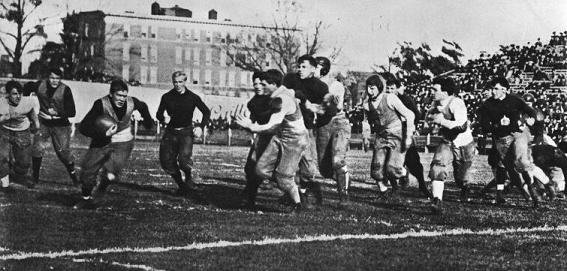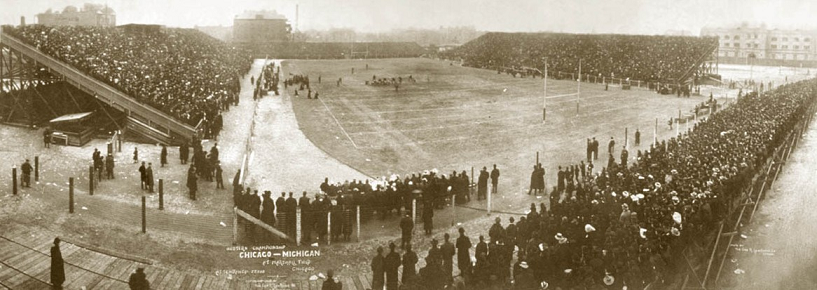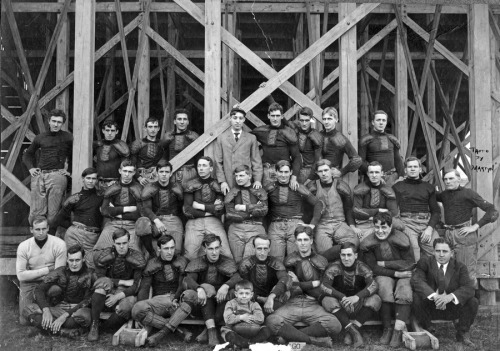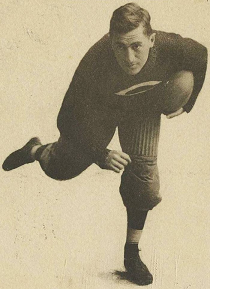



| Wesleyan (7-2-1) | 27-0 | (#26-35) |
| Syracuse (8-3) | 16-0 | #24 |
| Springfield (3-5) | 29-0 | |
| Holy Cross (6-3) | 30-0 | (#26-35) |
| Penn State (8-3) | 12-0 | #23 |
| Army (4-4-1) | 20-0 | #15 |
| at Columbia (4-3-2) | 53-0 | (#26-35) |
| Brown (7-4) | 11-0 | #18 |
| Princeton (8-2) | 23-4 | #10 |
| at Harvard (8-2-1) | 6-0 | #5 |

| North Division High | 26-0 | |
| Lawrence (7-3) | 33-0 | |
| Wabash (4-5) | 15-0 | |
| Beloit (3-6-1) | 38-0 | |
| Iowa (8-2) | 42-0 | (#26-35) |
| Indiana (8-1-1) | 16-5 | #21 |
| at Wisconsin (8-2) | 4-0 | #6 |
| at Northwestern (8-2-1) | 32-0 | (#30-50) |
| Purdue (6-1-1) | 19-0 | #21 |
| Illinois (5-4) | 44-0 | (#30-50) |
| Michigan (12-1) | 2-0 | #3 |
 The
Chicago
Maroons were coached by the legendary Amos Alonzo Stagg, a Hall of
Famer as both a player (at Yale) and coach. The 1888 Yale team he
played for outscored opponents 698-0. He went 224-111-27 in 41 seasons
at Chicago 1892-1932, winning 7 conference titles and 2 national
championships. Overall he was 314-199-35 in 57 seasons, fifth all time
in major football coaching wins. He is credited with inventing
all of the following: the
huddle, quick kick, hidden ball trick, man in motion, backfield shift,
statue of liberty play, lateral, fake punt, end around, double reverse,
tackling dummy, helmets, numbers on jerseys, and padded goalposts.
The
Chicago
Maroons were coached by the legendary Amos Alonzo Stagg, a Hall of
Famer as both a player (at Yale) and coach. The 1888 Yale team he
played for outscored opponents 698-0. He went 224-111-27 in 41 seasons
at Chicago 1892-1932, winning 7 conference titles and 2 national
championships. Overall he was 314-199-35 in 57 seasons, fifth all time
in major football coaching wins. He is credited with inventing
all of the following: the
huddle, quick kick, hidden ball trick, man in motion, backfield shift,
statue of liberty play, lateral, fake punt, end around, double reverse,
tackling dummy, helmets, numbers on jerseys, and padded goalposts.| Yale 10-0 | Chicago 11-0 | ||||||||||||||||||||||||||||||||||||||||||||||||||
|---|---|---|---|---|---|---|---|---|---|---|---|---|---|---|---|---|---|---|---|---|---|---|---|---|---|---|---|---|---|---|---|---|---|---|---|---|---|---|---|---|---|---|---|---|---|---|---|---|---|---|---|
|
|
||||||||||||||||||||||||||||||||||||||||||||||||||
|
1) Helms Houlgate (math system) | 4.1 4.1 |
| 3) Parke Davis | 4.0 |
| 4) Billingsley (math) | 3.9 |
| 5) National Championship Foundation | 3.4 |